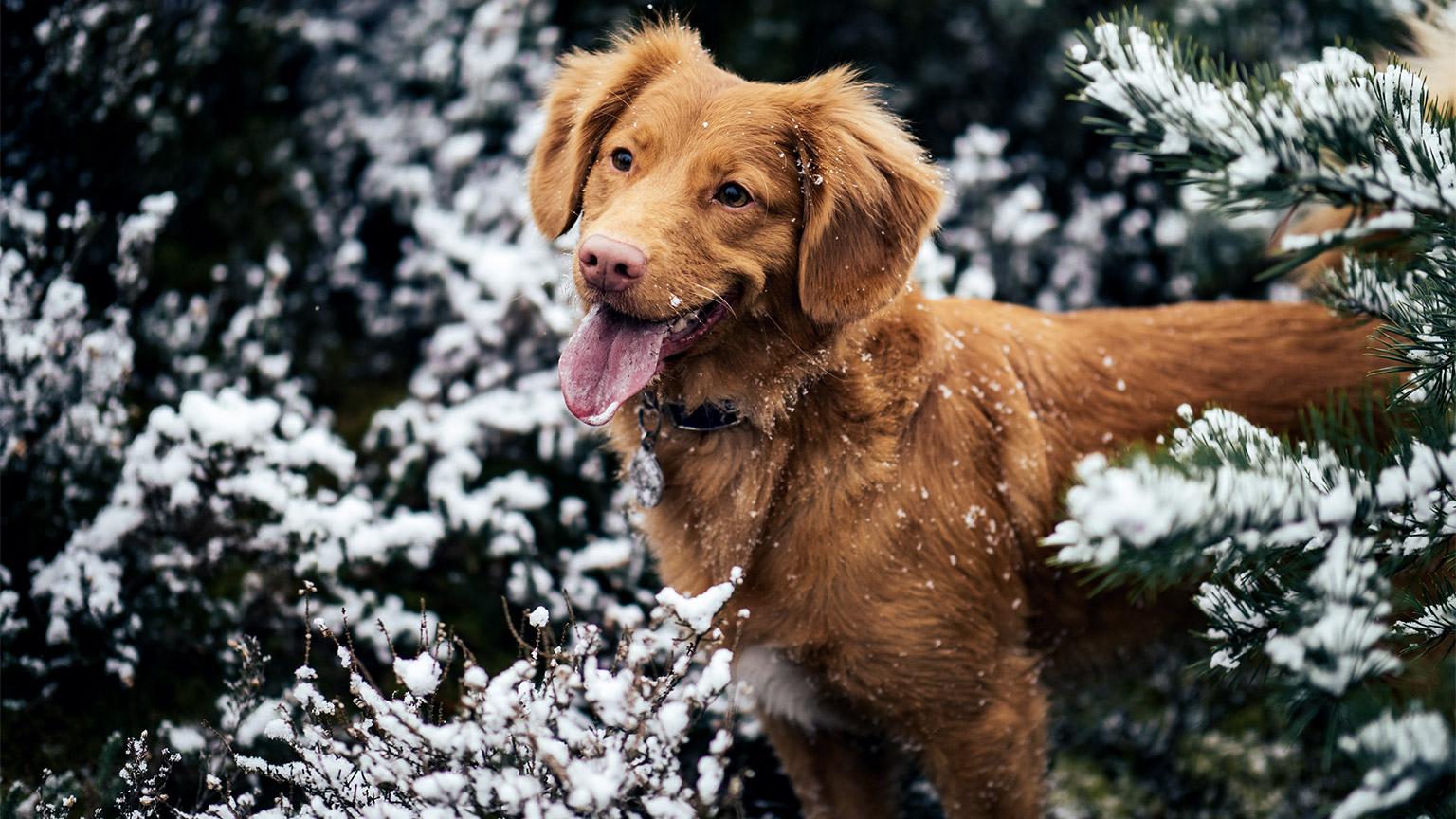Animals that enter your care facility must be able to be correctly identified to distinguish them from others within their species/breed. Some general identifiable characteristics that can be used as part of your record-keeping practices include:
- Age, sex (gender), and size (weight, height) of the animal - You may have to provide an educated guess of the animal's age if it is a stray or wild/native.
- Coat or skin colours and texture - Certain species and breeds will have common coats and skin colourings however individual animals may have unique characteristics such as markings, patterns, and/or permanent scars.
- Eye colour - Might be breed-specific however some animals have different eye colours in the left / right eyes which are unique.
- Nail colour - For example, dogs may have dark or light colour nails (claws).
- Microchip, Ear Tags, Tattoos, Leg Bands, Collars, branding / Tags - These will apply if the animal is owned.
- Movement and behaviour - Physical characteristics such as chronic limping.
In addition to these generic identifying characteristics, there are common species and breeds that you are likely to encounter and you should be familiar with their distinguishing characteristics.
The animal kingdom classification is used to identify and understand how all living organisms are related. Species are grouped based on shared characteristics.
There are mainly 8 categories of classification that define every species. The primary method of animal classification is:
- Domain
- Kingdom
- Phylum
- Class
- Order
- Animal Families
- Genus
- Species
Domain
This is the top level of classification. This level categorizes life in the most general way. Eukarya is the domain for all animals and other living organisms such as plants and fungi.
Kingdom
There are six different animal kingdom classifications. The kingdom for animals is Animalia.
Animalia
This kingdom includes all living and extinct animals. This kingdom is classified as complex multi-celled organisms that do not produce their own food.
Example: Tigers, dolphins, dogs and humans!
Phylum
There are seven different phyla (phylum - singular; phyla - plural). All animal species will fall into one of these groups. The seven animal phyla are:
-
Porifera
Aquatic invertebrates are known as sponges. These can be found in every ocean.

-
Cnidaria
Aquatic animals that are diploblastic. Cnidaria can be found in both freshwater and marine environments but most commonly in marine environments. They include over 11,000 species, including coral, jellyfish, and anemones.

-
Platyhelminthes
Flatworms lack any respiratory or circulatory systems. Most Platyhelminthes are parasitic, including tapeworms and flukes.
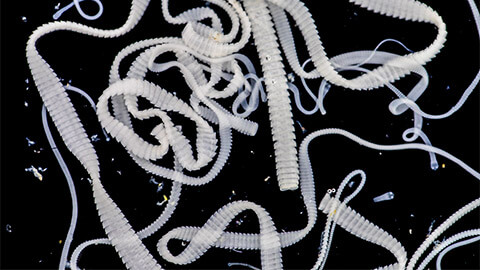
-
Annelida
Segmented and symmetrical worms. These worms are more complex than Platyhelminthes. They have a nervous system, a respiratory system and sense organs. Examples of these worms include the common earthworm and leeches.

-
Mollusca
This is the largest aquatic phylum. This phylum contains invertebrates with soft unsegmented bodies. This includes clams, mussels, and snails.

-
Arthropoda
Arthropods are invertebrates with an exoskeleton and segmented bodies. Well-known arthropods are insects (such as butterflies), crustaceans (such as shrimp) and arachnids (such as scorpions).

-
Chordata
The phyla Chordata contain animals that develop a notochord (a cartilaginous skeletal rod that supports the body) during embryonic development. Chordates are also known as vertebrates. Vertebrates include dogs, horses, birds, and us, humans!
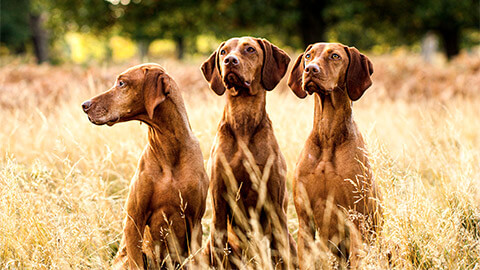
Class
Animal classes are even smaller groups. The Chordata phylum is divided into these classes. There are 7 classes. These are:
- Agnatha (Jaw-less fish)
- Chrondrichtyes (Cartilaginous fish)
- Osteichthyes (bony fish)
- Amphibia (Amphibians)
- Reptilia (Reptiles)
- Aves (birds)
- Mammalia (Mammals)
Order
The order divides members of a class into sub-groups. Sub-groups or order are determined by specific and definitive features as well as common ancestry. The common name for an animal generally comes from its order rank. For example, primates are commonly referred to as monkeys, and canines are commonly referred to as dogs.
Animal families
This is a more specific grouping. It divides members of an order into logical, groups of related organisms. Animal family names usually end in ‘ae.’ For example the family name for canines is Canidae. The family name of Felines is Felidae.
Genus
The genus divides members of the family into smaller groups of closely related organisms. Typically, all members of a genus share a single common ancestor. Genus names form the first part of an organism’s scientific name. A genus should always be put in italics.
Species
This is the most specific classification. Species are determined by an exact, specific group of organisms that are identical in terms of morphology. Offspring can only be produced from members of the same species. Species name forms the second part of an organism’s scientific name. The species should also always be put in italics.
Here is an example of animal classification for a dog.

Domain: Eukarya
Kingdom: Animalia
Phylum: Chordata
Class: Mammalia
Order: Carnivora
Animal Families: Canidae
Genus: Canis
Species: Lupus
Sub-species: Familiaris
Scientific name: Canis Lupus Familiaris
Learning activity:
Choose an animal and determine the animal classification. You need to include:
- Domain
- Kingdom
- Phylum
- Class
- Order
- Animal families
- Species
There are currently around 180 breeds of domestic dog (scientific name Canis familiaris shortened to Canine within the animal care industry) recognised in Australia, although this number is more like 350 if all breeds recognised by the World Canine Association are included.
To make recognising and selecting (and judging) breeds easier, dog breeds are further classified into 'groups' based on similarities such as temperament and physical characteristics or the 'job' they were bred for.
Dog breed groups
There are seven (7) groups recognised in Australia.
- Toy breeds
- Terriers
- Gun dogs
- Hounds
- Working dogs
- Utility dogs
- Non-sporting dogs
Toy Breeds
- Bred down in size to create a convenient pet.
- Primarily companion animals.
- Examples include Australian Silky Terrier, Cavalier King Charles Spaniel, Chihuahua, Maltese, Pomeranian, and Pug.
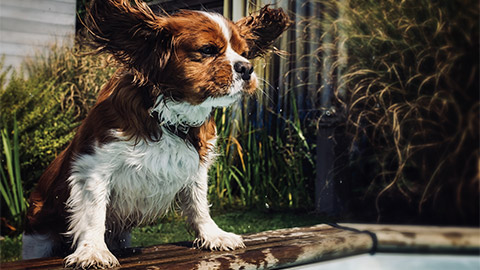
Terriers
- Initially bred to hunt vermin.
- Usually energetic and renowned for their bold, fearless temperament.
- Examples include American Staffordshire Terrier, Fox Terrier, Jack Russell Terrier, Staffordshire Bull Terrier, and West Highland White Terrier.

Gun Dogs
- Bred for their detection and retrieval skills used in hunting.
- Divided into three categories: Retrievers, Pointer / Setters, and Flushing Dogs.
- Examples include Golden Retriever, Labrador, German Shorthaired Pointer, English Setter, and English Cocker Spaniel.

Hounds
- Selectively bred for their hunting/tracking drive. Used by clubs and hunters to hunt game.
- Divided into two categories: Sighthounds and Scent hounds.
- Examples include Greyhound, Whippet, Beagle, Dachshund, and Rhodesian Ridgeback.

Working Dogs
- Bred for their herding and protective instincts.
- Not recommended for families with small children.
- Examples include Australian Cattle Dog, Australian Kelpie, Australian Shepherd, Border Collie, Collie, Corgi, and German Shepherd.
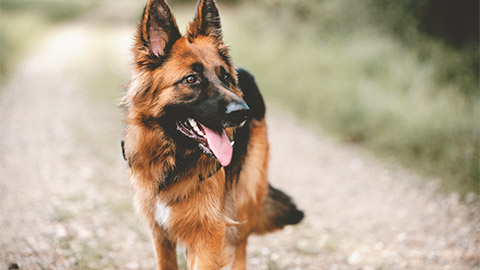
Utility Dogs
- Selectively bred to perform a specific task such as sledding, guarding, or rescue.
- Individual breeds do not share common characteristics.
- Examples include: Akita, Alaskan Malamute, Boxer, Doberman Pinscher, Rottweiler, St. Bernard, Schnauzer and Siberian Husky.
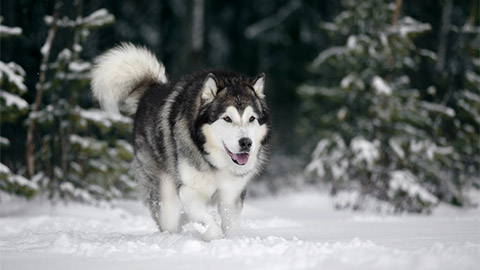
Non-Sporting Dogs
- Speciality and exotic dog breeds that have been bred for a specific physical characteristic.
- Individual breeds do not share common characteristics.
- Examples include Boston Terrier, British Bulldog, Dalmatian, Great Dane, and Poodle.

Of course, many dog breeds are interbred either deliberately or by accident. Deliberately cross-bred dogs are also known as ‘designer dogs’, and are often given hybrid names derived from both the parent breeds. Whilst not officially recognised by international associations they are increasing in popularity.
Often designer dogs are bred for a particular trait that one of the breeds possesses like lack of fur shedding (poodles). Alternatively, dogs that are accidentally cross-bred are known as ‘mongrels’. They generally have less commercial value than purebred or designer-bred dogs but are thought to be less susceptible to genetic health problems associated with purebred inbreeding.
Dog Coat Types and Colours
There are many different coat types and colours seen on different breeds of dogs, some breeds may have both long and short-haired types or smooth and wire-haired types. Some of the common terms you may hear being used when referring to the type of coat a dog has are outlined below.
- Long-haired (long coated) - Example: Maltese.
- Short-haired (smooth coated) - Example: Doberman.
- Wire-haired (coarse wiry coat, usually fairly long) - Example: Irish Wolfhound.
- Curly coated - Example: Curly Coated Retriever
- Double coat (rough-coated) - having a thick, soft undercoat for insulation, with longer guard hairs providing protection – Example: Siberian Husky.
Dogs can also be identified by their coat colour which is often breed-specific. For example, Labradors are often referred to as golden, chocolate, or black. Some dogs may combine two colours in a recognised pattern. For example, harlequin is used to describe white dogs that have black splotches or brindle which is a mix of a darker colouring (usually black) with a lighter colour (usually brown/tan/gold) creating a striped appearance.
Although purebred cats are becoming more common, the most common breed of a cat kept as a pet in Australia is still the Domestic, which is a cat of mixed or unknown genetic history.
According to the International Cat Association, there are currently around 60 breeds of domesticated cats (scientific name Felis catusor within the animal care industry the species is called Feline) recognised internationally, with another 10-20 breeds, including the Domestic, that are not officially recognised for showing purposes.
Unlike dogs, cats were not commonly bred for a specific purpose, but more for specific physical characteristics seen as appealing or personality traits that made them more compatible as a companion. Before selective breeding, survival was based entirely on natural selection. Geographical location has influenced the type of cat that you are more likely to come across, with Western countries tending to be more heavy-set, rounded cats and Eastern countries having more long, lean, angular cats.
Cats can be described using their coat length, colour, and pattern, Domestic cats, in particular, are further grouped by their coat length. The three major coat type classifications are:
- Short-haired (SH) - Relatively short hair (usually <2.5cm) over the entire body. Can be smooth (fine) or ‘fluffy’ (thick). Domestic cats in the category are referred to as Domestic Shorthair (DSH).
- Medium-haired (MH) - Relatively short hair over the trunk, longer hair around mane, tail, and legs (feathers). Domestic cats in the category are referred to as Domestic Medium hair (DMH).
- Long-haired (LH) - Longer hair (>2.5cm) over the entire body. Domestic cats in the category are referred to as Domestic Longhair (DLH).
Three dominant colours occur in varying degrees, they are black, red, and white (although white is technically the absence of any other colour). The black colour includes brown and chocolate, as well as dilute versions such as grey, blue, and silver. The red colour includes ginger and orange, as well as dilute versions such as cream. Red and black combinations create colours such as lilac and fawn.
Coat colours play a big part in identifying coat patterns with many colour combinations having specific names. The most common coat patterns are:
- Tabby - Striped pattern, can be black/brown, ginger, or a dilute version of either. Has an 'M' shape on the brow.
- Tortoiseshell - Combination of black, red, and white in patches. Always female.
- Bi-Colour - Any solid colour and white.
- Colour Point - Also known as 'pointed'. Pale colour on the body with darker points at the extremities ie. nose, ears, feet & tail.
In the following slideshow of the various breeds take note of the different coat types and colours:
- Birman
- Siamese
- Scottish Fold
- Russian Blue
- Ragdoll
- Persian
- Maine Coon
- Domestic
- Devon Rex
- Burmese
- British Shorthair
- Bengal
Several features can be used to identify birds, these include:
- feather colour and type
- size
- beak shape
- foot type
- gape
- tongue type.
Most of the birds commonly kept as pets are as follows.
Passerines
Birds in this order have three forward-facing toes and one backward-facing toe and are often known for their song singing abilities. This group includes birds such as canaries and finches.
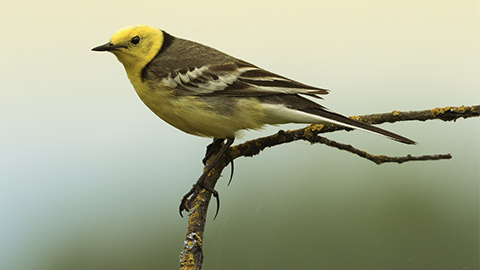
Psittacines
This order includes parrots such as budgerigars and cockatoos. The most recognisable characteristic of birds in this group is their sturdy curved bill/beak. They also have two forward-facing toes and two backward-facing toes.
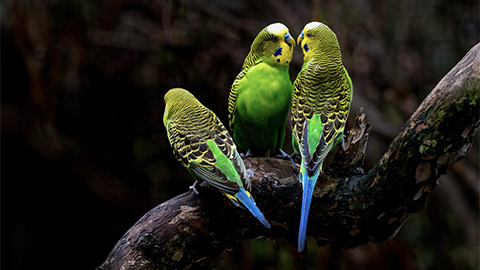
Pocket pets refer to smaller animals that are kept as pets including mice, rats, rabbits, and guinea pigs.
Mice
Some people may keep native species of mice, however, most mice kept as pets are fancy strains of the house mouse. Although they could be hairless, Manx (tail-less), or long-haired, most mice are identified by their colour and gender.
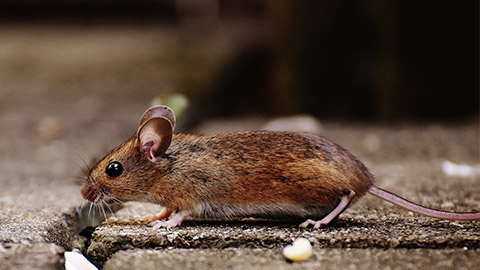
Rats
As with mice, native rats are less common than fancy strains of the brown rat. Some particular colour combinations, patterns, and features have their own names, such as the Hooded Wistar and the Dumbo, but most are recognisable by their colour and gender.
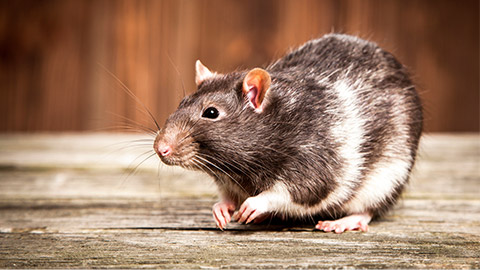
Guinea Pigs
Most commonly identified by their coat colour and type. The three most common coat types are longhaired, shorthaired, and coarse-coated, and the main colours seen are black, brown, white, or a combination thereof.
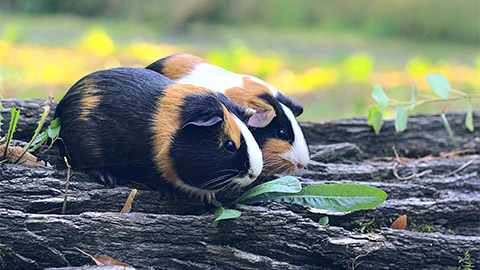
Rabbits
Most pet rabbits originally descended from the European rabbit, although it may not be apparent in some of the many varieties available today. Rabbits can be identified by their breed, as well as their coat type and colour. The most common varieties encountered are the Dwarf (miniature), the Lop (drooping/hanging ears), the English (most similar to the original European), and the New Zealand White (commonly recognised as laboratory rabbits). Giant breeds of rabbits are also becoming relatively well known.
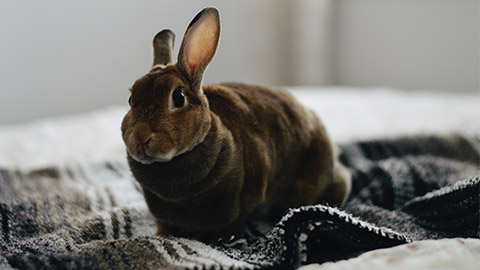
Reptiles are classified into four orders:
- Crocodilia - Crocodiles, Caimans, Alligators.
- Sphenodontia - Tuatara - an ancient species found only in New Zealand.
- Testudines - Turtles and Tortoises.
- Squamata - Lizards and Snakes.
Lizards, Snakes, and Turtles are commonly kept as pets in Australia.
Turtles
The two turtles commonly kept as pets are the Eastern Snake-necked Turtle and the Murray River Turtle. These two species are easily differentiated by the length of their neck, with Murray River Turtles having a much shorter neck.
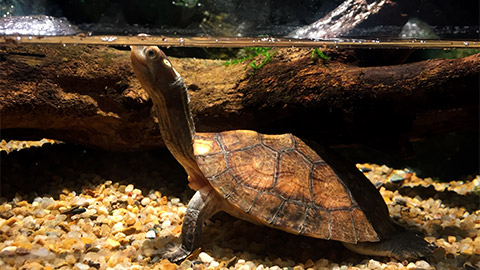
Snakes
Most snakes kept as pets are part of the python family. Pythons are identified by the following factors.
- They often have vibrant patterning in wavey stripes, spots, or blotches (although there are some plain colour varieties such as the Olive Python).
- They are non-venomous, constricting hunting technique.
- They have large triangular-shaped heads.

Lizards
There are four Families of lizards found in Australia: Dragons, Geckos, Skinks, and Monitors.
Lizards can be identified by their species, colour, size, and the type of covering they have. For example, do they have scales, a smooth outer layer, or skin or are they covered in spikes?
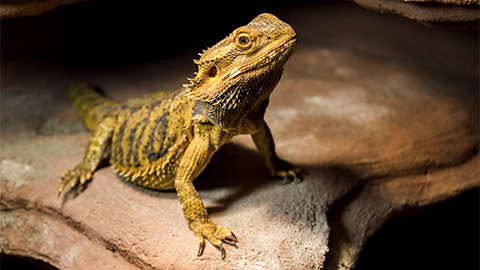
There are two broad categories of aquarium fish: Freshwater and Saltwater (marine) - and within each of these categories are cold-water and tropical varieties. Coldwater fish are suitable for cold water aquariums but tropical fish need heated water. Outdoor pond fish are normally of the freshwater-cold-water type.
Tropical freshwater fish include Patties, Swordtails, Guppies, and Mollies.
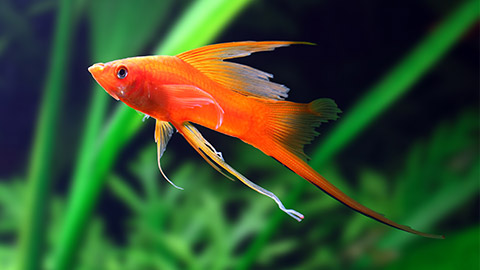
Common cold-water fish varieties include Goldfish, Comets, Shubunkins, and Fantails.


Horses can be kept as companion animals or as workhorses.
The most common breeds found in Australia include:
- Australian Draught Horse
- Australian Pony
- Australian Riding Pony
- Australian Stock Horse
- Coffin Bay Pony
- Waler Horse
Horses can be described by their height, sex, colour & markings, and whirls.
The standard measurement of horses is the ‘hand’. One (1) hand is equivalent to 4 inches or 10cm.
The height of a horse is measured from the floor to the highest point of the withers.
Unlike cats and dogs, sex is not just categorised by male or female. Depending on the age of the horse, will determine the name or sex the horse is identified as.
The sex of a horse is determined by the following.
- Mares are females over the age of 3.
- Stallions are uncastrated males over the age of 3.
- Geldings are castrated males of any age.
- Colts are males up to the age of 3.
- Filly’s are females up to the age of 3.
Horses may also be referred to as Foals or Yearlings. Foals are any horses that age from birth to 1 year. Yearlings are any horses between 1-2 years of age.
Colour is another important characteristic of a horse. It is important to keep records up to date, especially with the colour of a horse. It is common for a horse to change colour as they mature. For example, a horse may be born black but within a few years turn grey. The most common colours seen in horses include:
- Black
- Dark Bay
- Light Bay
- Liver Chestnut
- Chestnut
- Dun
- Strawberry Roan
- Palomino
- Piebald
- Skewbald
- Blue Roan
- Dapple Gray
- Fleabitten Gray
- Gray
- Albino
Horses also have a patch of hair that grows in the opposite direction to the rest of the coat. This patch of hair is called a Whirl. The Whirl is commonly found in the stomach area, on the face, neck, and sometimes on the stifle or hock areas. The Whirl is permanent and does not change throughout the horse’s life.
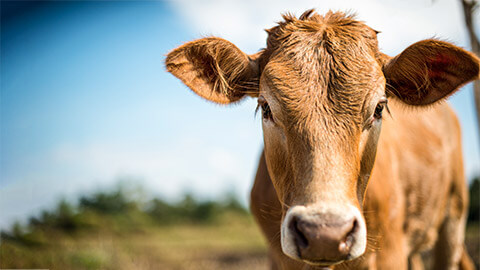
Livestock are animals used for commercial or economical purposes. These animals live on farms.
Livestock animals include but are not limited to:
- Cows
- Sheep
- Pigs
- Goats
- Alpacas
Livestock animals are generally categorised into industries. These industries include:
- Beef industries
- Sheep industries
- Dairy industries
- Pork industries
Livestock are bred and sold for the goods they produce. For example, a cow would be sold for the sale of beef in supermarkets, or sheep wool is sold for the production of blankets or clothing items.
Just like any other animal these animals can be identified by age, weight, colouring, markings, or patterns.
Permanent identification methods may include branding, tattoos, ear tags, ear notch, or marking using paint.
Animals can also be identified using permanent identification methods. These are man-made devices, objects, or markings that can be used as a way to determine who owns the animal.
Permanent identification methods include:
- Microchipping (companion animals)
-
Tattoos (Companion animals & livestock)

-
Branding (Livestock)
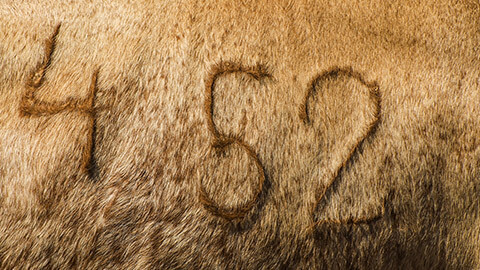
-
Ear or leg tags (Birds & Livestock)
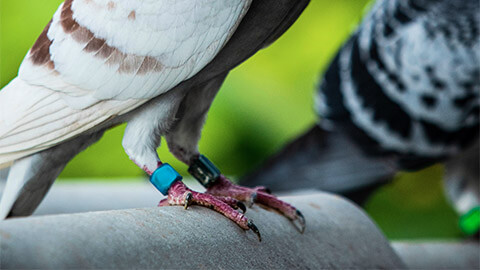
- Freeze branding (Livestock)
-
Ear notches (Livestock)
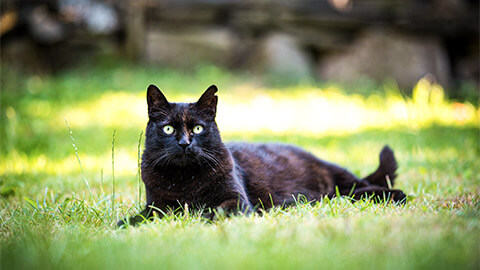
These methods are invasive and can cause a degree of pain for the animal when being placed.
